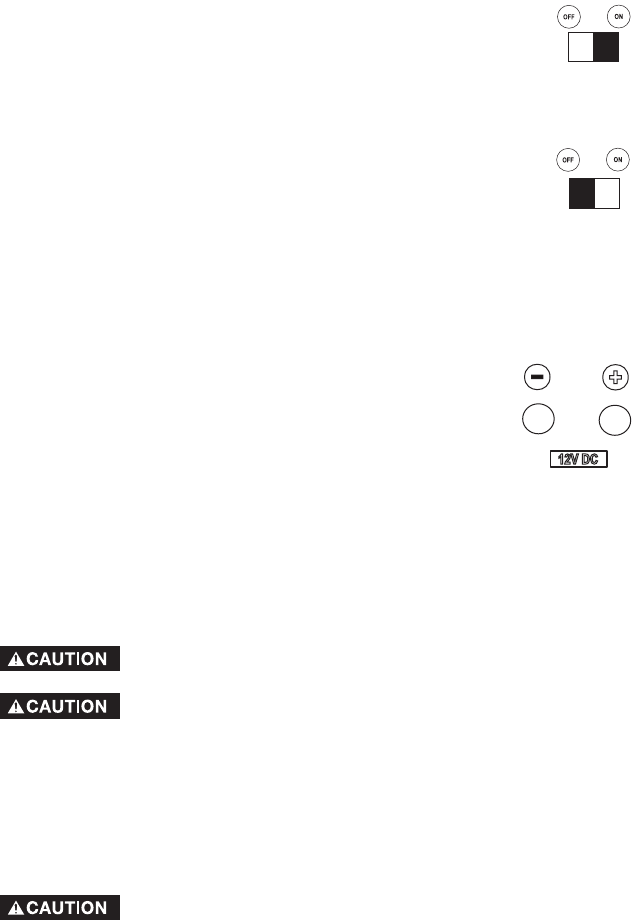
17- ENG
D28469
IDLE CONTROL
Choose the correct application.
1. For normal application such as power tools, small electric appliances, light
bulbs, and radios:
Place the idle control switch in the ON position. The generator
will idle down when there is no load. This lowers the engine
noise, saves on fuel consumption, and engine life.
2. Idling down IS NOT recommend on large motors (refrigerators, freezers, etc)
or voltage sensitive electronic equipment (computers, televisions, etc). For
these applications:
Place the idle control switch in the OFF position.
12V DC OUTLET
IMPORTANT: Allow generator to run at no load for 5 minutes upon each initial
start-up to allow engine to stabilize.
IMPORTANT: When the unit is running the battery will charge. DO NOT
connect the 12V DC cables to the generator’s battery.
To charge battery:
1. Using the 12V DC cables supplied, connect the red
positive (+) 12V DC cable to the battery's positive (+)
terminal.
2. Attach the other end of the red positive (+) 12V DC cable
to the generators positive (+) 12V DC outlet.
3. Connect the black negative (-) 12V DC cable to the battery's negative (-)
terminal.
4. Attach the other end of the black negative (-) 12V DC cable to the
generators negative (-) 12V DC outlet.
5. Charge the battery according to battery or equipment manufacturer
recommendations.
BEFORE START UP
This generator has been shipped from the factory without oil in the
crankcase. Operating the unit without oil can damage the engine.
Always check engine oil level before every start. Running engine
low of oil or out of oil could result in serious damage to the engine.
Follow the steps listed below before starting generator:
1. Check engine oil. Refer to the Engine Operator's Manual for correct grade and quantity
of oil.
2. Check fuel level, fill as required. Make sure generator is turned off and has been allowed
time to cool down. Use clean, fresh, regular unleaded gasoline with a minimum of 87
octane. Do not mix oil with gasoline.
Never fill fuel tank completely. Fill tank to 1/2" below the bottom of
the filler neck to provide space for fuel expansion. Wipe any fuel
spillage from engine and equipment before starting engine.


















